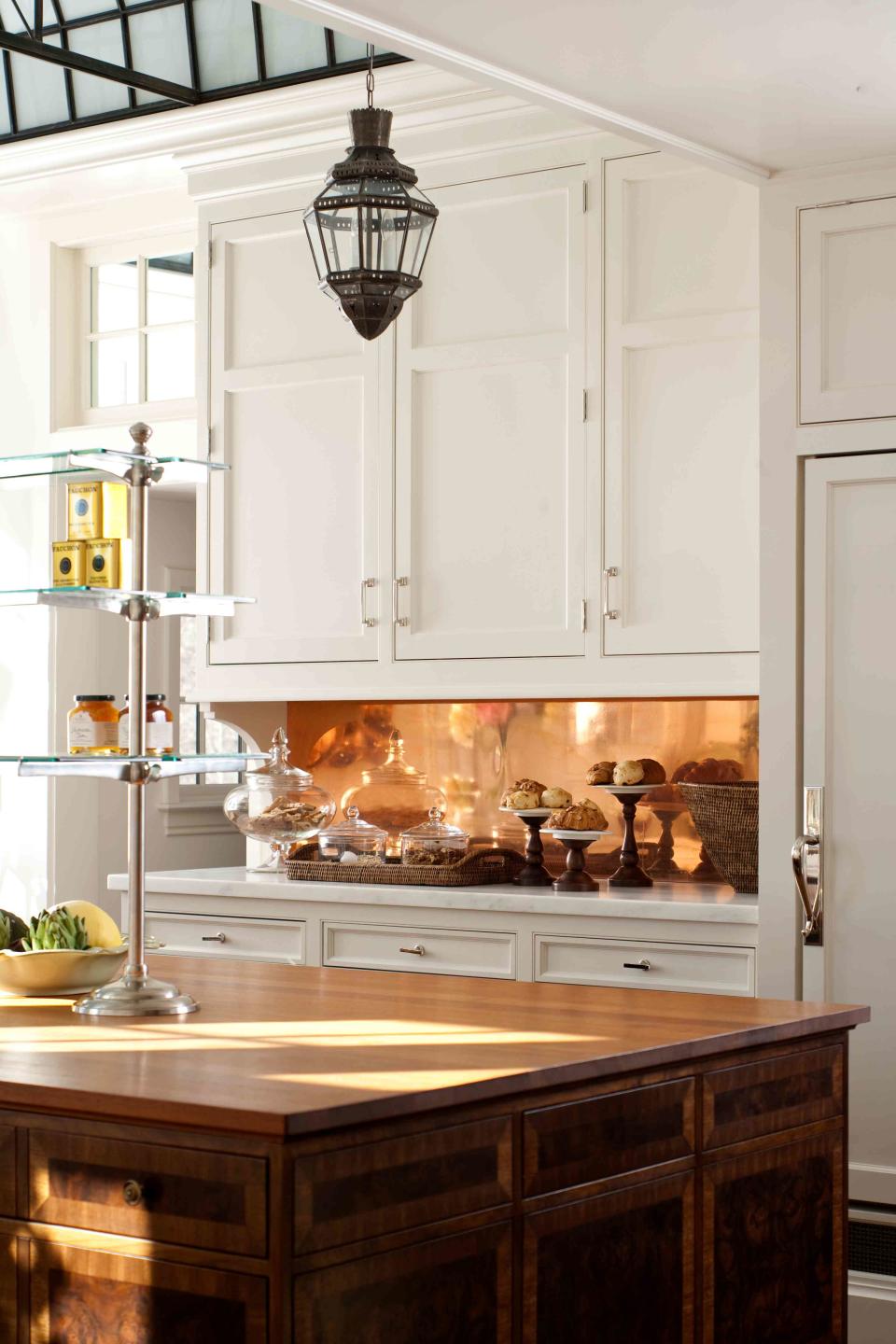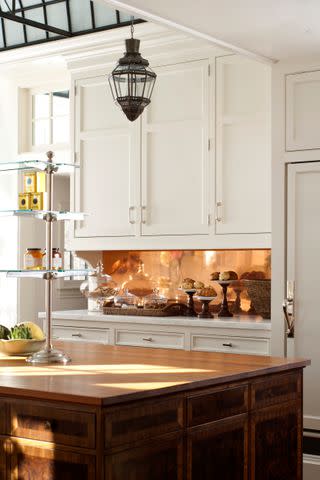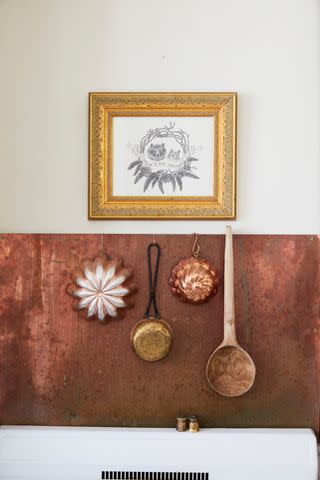Copper Backsplashes Are Trending: What to Know About the Metallic Kitchen Accent
Add beauty and character to your kitchen with a copper backsplash.

John Bessler
When you think of metal kitchen finishes, stainless steel likely comes to mind. But what about its counterpart, copper? For a host of reasons, an increasing number of homeowners are gravitating towards this warm metal in their kitchens. So much so that copper backsplashes were identified as a highly sought-after finish in a 2023 Houzz emerging trends report.
“Copper can fit anywhere in the home, but we’re seeing growing interest in the material specifically for backsplashes, “ says Mitchell Parker, Houzz senior editor. “Copper can really take center stage in the kitchen and show off a warm beauty, whether it’s perfectly polished or weathered and worn.”
The warm, natural look of copper makes it a versatile choice for a variety of kitchen styles. It can be dressed up or down and is equally at home in both traditional and contemporary spaces. Gain inspiration for your own kitchen with our guide to copper backsplashes, including design ideas and tips for care and maintenance.

John Bessler
Benefits of a Copper Backsplash
“A copper backsplash is fantastic for someone who wants the warmth of a warmer metal but doesn’t want to go with a trendy brass look,” says Victoria Holly, principal and founder of Victoria Holly Interiors. “Copper has a warm and inviting quality that can instantly elevate the ambience of a kitchen.”
Copper backsplashes also get better with age. A backsplash made with real copper will patina with use and time, developing a richer color thanks to oxidation—when the metal reacts with oxygen and moisture in the air. Oxidation can cause unfinished copper to take on a striking blue-green hue, which helps protect the metal from further corrosion. “The patina and worn look that aged copper develops over time can evoke a sense of history and authenticity, making it a great choice for those who appreciate vintage aesthetics,” says designer Ginger Curtis of Urbanology Designs.
Aesthetics aside, a huge benefit of a copper backsplash is its natural antimicrobial properties. “It is said to resist bacteria better than stainless steel, which makes it a practical choice for the kitchen,” says Parker.
Plus, copper is remarkably durable, another benefit to consider when selecting materials to outfit a high-traffic room like the kitchen.

Julie Soefer
How to Style a Copper Backsplash
Copper speaks to those who appreciate natural materials as well as those who desire elegance and luxury. And because there is no shortage of forms, colors, or finishes available—from large, sleek sheets of copper to hammered copper tiles—there’s an abundance of options to create a copper backsplash that suits your kitchen.
Traditional Copper Backsplashes
With its warm tone and subtle glow, a copper backsplash is an excellent choice for a traditional-style kitchen. “For a more traditional kitchen, I would love to see a textured copper backsplash or pattern,” says Curtis. “This style adds depth and character, complementing the warmth and charm often associated with traditional kitchens.”
Designer Jerad Gardemal of JF Gardemal Designs suggests stamped copper tiles or stamped copper sheeting in a traditional kitchen. Both options will run you more than a typical tile backsplash, but, he notes, “the beauty and longevity of copper are timeless and chic.”
Modern Copper Backsplashes
The warmth that makes copper such a natural fit for traditional spaces is the same quality that can make it sing in modern kitchens, which frequently feature cooler metals like stainless steel or chrome.
“A polished or brushed copper surface with clean lines can provide a striking contrast against minimalist cabinetry and countertops,” says Curtis. “This combination of contemporary design elements with the warmth of copper can create a visually appealing focal point in the kitchen.”
As a bonus, the reflective quality of a polished copper backsplash gently bounces light around minimalist kitchens.

David A Land
How to Clean a Copper Backsplash
The method and frequency with which you clean your copper backsplash will depend both on the finish and your preference for patina. If your copper backsplash has a very strong lacquer and seal, a simple clean with mild dish soap and warm water will suffice, as harsh chemicals can strip away the protective coating.
Unfinished copper, on the other hand, will develop a patina over time thanks to oxidation. If you want to keep that reaction in check, limit regular cleaning of your unfinished copper backsplash to every 3 to 6 months. “Warm soapy water and a soft cloth maintain the integrity of the copper and will preserve its brilliance,” says Gardemal.
However, if you wish to remove tarnish or restore your copper to a brilliant shine, you can create a solution at home that does the trick.
Create a paste by combining an acid, such as lemon juice or vinegar, and a mild abrasive, such as salt or baking soda.
Use a soft cloth to gently polish the copper with the paste, moving in small circular motions.
Use a damp cloth to rinse the paste.
Dry the copper backsplash completely with a microfiber cloth.
Get the Look of a Copper Backsplash for Less
If you desire the look of a copper backsplash but want a lower-maintenance or lower-cost option, there are many alternatives available, including glass tile or a painted faux copper look.
Curtis suggests using a copper veneer or copper foil. “These materials provide the appearance of copper while being more affordable and easier to maintain. Copper laminate or metal-effect tiles are another choice that can mimic the look of copper without the need for extensive care.”
Copper-colored stainless steel is yet another low-maintenance choice that provides the appearance of copper without the risk of oxidation or the need for regular polishing to maintain the patina.
For more Better Homes & Gardens news, make sure to sign up for our newsletter!
Read the original article on Better Homes & Gardens.

